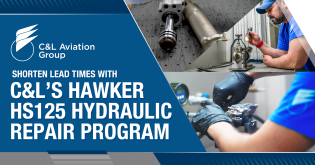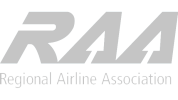Ensuring an aircraft properly operates and meets safety requirements is a top priority. That’s why service bulletins and airworthiness directives alert operators of changes or upgrades to an aircraft or product. But when are you required to comply with these changes? When is a service bulletin optional? What are the consequences of not complying with an airworthiness directive?
This article explains what service bulletins and airworthiness directives are, when compliance is mandatory, and what you need to know about compliance.
This article is written in accordance with FAA specifications. While service bulletins and airworthiness directives in other jurisdictions (for those operating outside of the FAA) may be similar, there may be differences. Always refer to the appropriate Regulatory Authority for guidance.

What are Service Bulletins?
Service bulletins (SBs) are issued by the original equipment manufacturer (OEM) and describe changes to be made to their aeronautical products. These changes range from noncritical to critical – they may inform you of possible upgrades, recommended inspections, or problematic issues that require maintenance to remain airworthy.
Operator compliance is required based on the severity of the service bulletin. SBs are designated optional, recommended, alert, and mandatory.
Optional Service Bulletin
Any change made to an aeronautical product needs FAA approval. An optional service bulletin might inform operators about noncritical changes that do not affect aircraft safety, such as variations in seat designs, carpets, or entertainment systems.
Whether an operator complies with the changes in an optional SB is based on preference.
Alert Service Bulletin
Alert service bulletins are issued for safety-related reasons. Although not mandatory under FAA or FAR unless accompanied by an airworthiness directive (AD), alert service bulletins should never be ignored. Not complying with an alert service bulletin without a valid reason is viewed as a breach of organizational responsibility.
An alert service bulletin generally precedes a mandatory service bulletin.
Mandatory Service Bulletin
Mandatory SBs address potential or known safety concerns. In some cases, aircraft may continue to operate provided the upgrades are completed within the specified amount of time (see below). In other instances, aircraft may be grounded until maintenance is completed.
For aircraft operating under 14 CFR Part 91, mandatory service bulletins are advisory – unless the SB is accompanied by an AD. Aircraft operating under 14 CFR Parts 121 or 135 must comply with a mandatory SB, regardless of whether an AD accompanies the SB.
What are Airworthiness Directives?
Airworthiness directives (ADs) are issued by the FAA or foreign Regulatory Authorities. ADs are legally enforceable in accordance with 14 CFR Part 39 and may be accompanied by SBs. If an AD is accompanied by an SB, the changes or upgrades listed are critical to the safety of the aircraft.
There are three stages in the process of developing an AD: Notice of Proposed Rulemaking, Request for Comment, and Final Rule. Only an Emergency AD can bypass the usual process.
- Notice of Proposed Rulemaking (NPRM) is the first stage in the AD process and is issued when safety considerations do not require immediate action.
- During the Request for Comment stage, there is a set amount of time when anyone can comment on the proposed AD before a final rule is issued.
- A Final Rule is issued, specifying what action to take. It is accompanied by responses to the comments made during the Request for Comment stage.
Emergency Airworthiness Directive
An Emergency AD is issued when an aircraft or product requires immediate attention. The Emergency AD is sent directly to owners and operators of the affected aircraft or product. A Final Rule is then sent to all other owners and operators to alert them of the existing problem.
When Should You Comply with Service Bulletins and Airworthiness Directives?
If a service bulletin is not accompanied by an airworthiness directive, should the operator make the suggested changes or upgrades?
The operator can decide whether to comply with non-mandatory suggestions based on preference or current needs. If an operator is undecided about whether to make optional or recommended changes, they should consider the following questions:
- Are the suggested changes applicable to our operation?
- Will making the changes improve aircraft safety and performance?
- Do the benefits outweigh the cost?
- Can we afford to wait to make the changes?
What are the consequences of not complying with a service bulletin that is accompanied by or references an airworthiness directive?
Operators must comply with specifications outlined in an SB that is accompanied by an AD. If operators fail to comply, their Certificate of Airworthiness will be invalid, and flying the aircraft will be illegal. The aircraft may be unsafe to operate, resulting in damage to the aircraft or injury or loss of life.
Is an operator still complying with an airworthiness directive if another method is used to address the issue?
An AD will specify how the issue with the product or aircraft may be rectified. Sometimes alternative methods of compliance (AMOC) are listed. The FAA may approve other alternatives, and ADs identify an FAA office where operators can submit their proposed modifications.
How Long Do You Have to Comply with Service Bulletins and Airworthiness Directives?
SBs and ADs will stipulate the amount of time operators have to make the changes or upgrades. Time may be specified in hours of operation, number of cycles, a calendar date, or operational terms (e.g., number of landings, etc.). Changes or upgrades must sometimes be made before the aircraft can fly again.
If the SB and AD do not have the same time listed, adhere to the time stated in the AD. Information provided in ADs may have been edited since the SB was issued and will always supersede the SB.
Operators cannot legally fly aircraft once the specified amount of time has expired.
Service Bulletins and Airworthiness Directives Advice
Review Service Bulletins
Always review SBs regardless of whether they are accompanied by ADs. OEM-recommended changes or upgrades should be considered to ensure passenger safety and aircraft performance. Discuss your options with a trusted mechanic if you are uncertain about complying with an optional or recommended SB or if you are concerned about making mandatory changes.
Comply with Revised Version Stated in Airworthiness Directives
If there are multiple revised versions of the SB, you must comply with the version specified in the AD – even if other SB revisions are released after the AD is issued.
Owner/Operator Responsibility
Owners and operators are responsible for ensuring that appropriate inspections and maintenance are completed in accordance with ADs and are properly documented. Owners are also responsible for aircraft that have been leased to other operators.
Flying to a Repair Facility
Sometimes operators may need to fly to a repair facility to make the mandatory changes, and some ADs allow aircraft to make the trip. If the AD does not permit aircraft to fly, operators can apply for a special flight permit from the FAA under Part 21 §21.199. If the FAA does not approve a special flight permit, the aircraft will not be allowed to fly and will be considered AOG (aircraft-on-ground).
Not Mandatory Today, But Tomorrow…
Be aware that a suggested improvement in a service bulletin may become mandatory in the future. Regulatory Authorities may choose an SB as a basis for an AD, thus changing the status of a service bulletin to mandatory.
Check the FAA Website
The FAA website includes a database for all current airworthiness directives where you can review any airworthiness directive for specific makes and models of aircraft.
Contact C&L Aviation Group
We are happy to answer your questions. Contact us using the form below, and someone will get back to you as soon as possible.

















